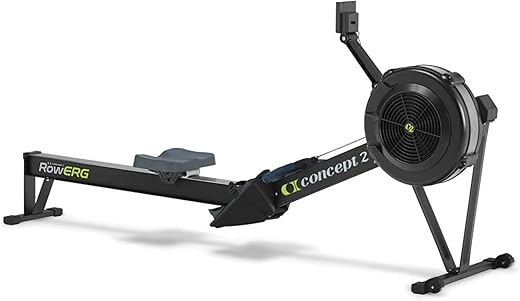The Concept2 Model D Rowing Machine is a sought-after piece of fitness equipment known for its robust construction and exceptional performance. This step-by-step guide will walk you through the assembly process, providing clear and concise instructions to ensure that you can set up your rowing machine quickly and accurately. With this guide, you’ll be ready to embark on your fitness journey with minimal hassle and maximum efficiency.
Guide to Assembling Your Concept2 RowErg Rowing Machine
Unpack the Components
Unpack all the components from the box carefully. Lay them out on a flat surface, such as a table or a clean floor, to ensure you have a clear view of everything included. Check the included manual, which often lists each part, and familiarize yourself with the items, such as screws, panels, and tools. Identify essential components like the main unit and connectors, making sure nothing is missing before proceeding with assembly.
Gather Your Tools
Gather the necessary tools before starting the assembly. Ensure you have a Phillips screwdriver and an adjustable wrench ready at hand. Check that the screwdriver fits the screws included in your assembly kit, and adjust the wrench to accommodate the sizes of nuts and bolts you’ll be working with. Having these tools within reach will streamline the process and help you avoid unnecessary interruptions.
Assemble the Front Leg
Locate the front leg of the rowing machine, which is typically identified by its shape and pre-drilled holes for attachment. Attach the front leg to the main frame using the provided bolts and washers, ensuring that the bolts pass through the appropriate holes on both the leg and the frame. Tighten each bolt securely with the appropriate tool, checking for stability and firmness in the connection. Confirm that the leg is firmly in place before proceeding to the next assembly step.
Attach the Rear Leg
Align the rear leg with the designated mounting points on the main frame. Insert the bolts through the holes and hand-tighten them to hold the leg in place. Use a wrench to securely tighten all bolts, ensuring there is no wobble. Check the stability of the attachment by gently shaking the rear leg, and make any adjustments if necessary.
Install the Flywheel
- Position the flywheel in the designated area on the frame, ensuring it aligns with the mounting points.
- Secure the flywheel according to the provided instructions, making sure all bolts are tightened properly.
- Check for any play or movement in the flywheel after securing it; this will help ensure optimal resistance during use.
- Confirm that the flywheel rotates smoothly without obstruction, as this is essential for the overall performance of the rowing machine.
Connect the Chain
Carefully thread the chain through the flywheel, ensuring it follows the designated path without twists or knots. Adjust the chain tension as needed, making sure it has a bit of slack but is not overly loose. Connect the chain securely to the handle, checking that the attachment is firm and stable. Verify the alignment of the chain and flywheel to promote smooth operation during rowing.
Attach the Seat
Install the seat onto the sliding rail by aligning the mounting brackets with the designated slots on the rail. Ensure that the seat glides smoothly by gently pushing it back and forth; it should move without any resistance or sticking points. Securely attach the bolts by tightening them with a wrench, making certain that they are snug but not overly tight to avoid damaging the rail. Check that the seat can move freely back and forth by testing its motion a few times, ensuring it remains stable and properly aligned.
Install the Footrests
- Align the footrests with the mounting brackets at the front of the machine.
- Slide the footrests into place until they fit snugly against the brackets.
- Adjust the height of the footrests according to your preference, ensuring they are comfortable for your workout.
- Tighten the screws or bolts securely to fasten the footrests, checking that they do not wobble or shift.
- Test the stability of the footrests by applying gentle pressure before starting your workout.
Connect the Monitor
Attach the performance monitor to its designated place on the rowing machine by aligning it with the mounting bracket. Secure it firmly in place, ensuring it clicks into position. Connect any cables by matching the connectors to their corresponding ports on the monitor and the machine. Check that all connections are tight and undamaged. Power on the monitor and verify that it lights up and displays readings, confirming it is functioning properly.
Final Checks
Perform a thorough inspection of all bolts and connections to ensure they are securely tightened. Wiggle each component to check for any looseness or instability. Test the machine gently by applying light pressure or performing a few movements to confirm its stability. Listen for any unusual sounds that may indicate a problem, and address them before proceeding with your workouts.
Final Assembly Tips
In conclusion, assembling the Concept2 Model D rowing machine is an uncomplicated task when you adhere to the outlined steps. By taking the time to ensure that each component is properly connected and secured, I can look forward to a rewarding rowing experience that will effectively support my fitness journey. Happy rowing!
Essential Equipment List
Effortless Assembly Guidance
Step-by-Step Guide to Mastering Your Concept2 Model D Rowing Machine
- Set Up the Machine: Start by adjusting the foot straps to fit your feet securely. Make sure the damper setting is appropriate for your fitness level; a setting between 3 and 5 is ideal for beginners
- Learn the Proper Technique: Familiarize yourself with the rowing stroke components: the catch, drive, finish, and recovery. Focus on using your legs to push off, followed by your back and arms in a smooth, fluid motion
- Start with Short Intervals: Begin with short rowing sessions, around 10-15 minutes, at a moderate pace. Gradually increase the duration and intensity as you become more comfortable with the machine
- Monitor Your Progress: Use the built-in performance monitor to track your time, distance, and strokes per minute. This will help you set goals and stay motivated as you improve
- Stretch and Cool Down: After your rowing session, take time to stretch your muscles, especially your legs, back, and arms, to help with recovery and flexibility







I had a little trouble attaching the flywheel. The instructions said to align it with the bracket, but it took me a couple of tries to get it right. Anyone else have issues with this step?
You’re not alone! Aligning the flywheel can be tricky. Just take your time, and don’t hesitate to double-check the alignment before tightening everything up.
Just assembled my Concept2 Model D last weekend, and I gotta say, it was a breeze! The instructions were super clear, and I had it up and running in under an hour. Can’t wait to hit the water simulation! Anyone else has success stories?
Thanks for sharing! It’s great to hear that you had a smooth assembly experience. Enjoy your rowing sessions—it’s such an awesome workout!
I think the assembly guide is solid, but what do you all think about the aesthetics of the Concept2 Model D? It’s functional, but I wish they had more color options!
That’s an interesting perspective! While function takes priority for most, a splash of color would definitely make it more appealing. Maybe they’ll consider that in future models!
When I was putting mine together, I found it helpful to lay out all the parts in the order of assembly. It saved me so much time! Also, make sure to have a friend around to help with the heavier parts—teamwork makes the dream work, right?
Great tip! Laying out the parts can really streamline the process. And yes, having a buddy to help definitely makes things easier. Thanks for sharing your experience!
I wish they had included a section on maintenance tips for the Concept2 Model D. I love my rower, but keeping it in good shape is important too! Any suggestions on that?
That’s a good point! Regularly checking the chain for lubrication and ensuring the seat slides smoothly can help maintain your rower. I’ll consider adding a maintenance section in future updates!
Just a heads up—when you connect the monitor, make sure it’s secure. I had mine fall off during a workout once and it was super annoying! Double-check those connections, folks!
Thanks for the warning! That’s a good reminder for everyone. Ensuring everything is secure helps avoid any mid-workout surprises!